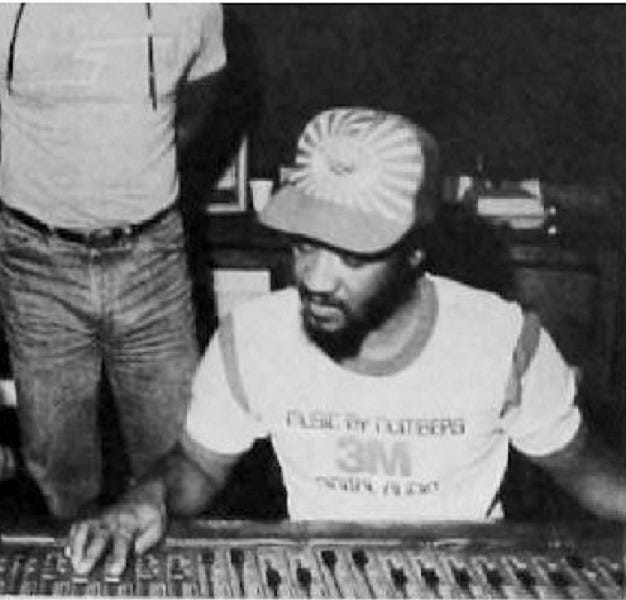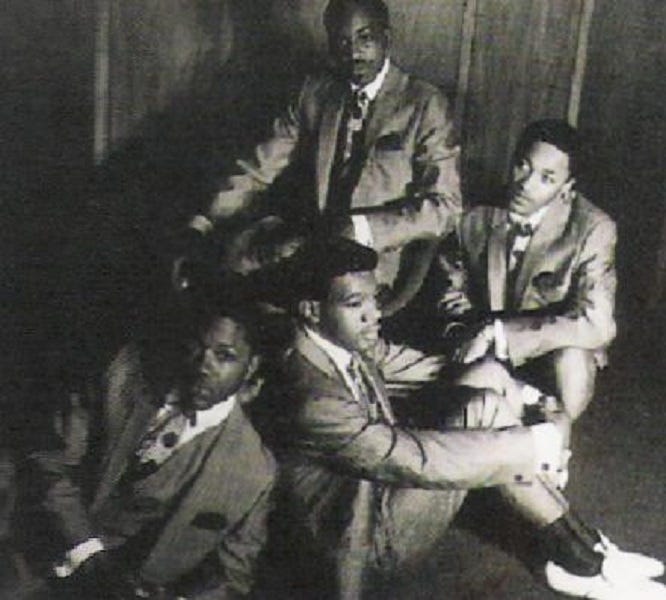William Brown (1946 – July 24, 2015) – Do You See What I See? (1972)
The title track from the Bar-Kays' most socially conscious album was co-written by the unsung Stax singer/songwriter who was also an original member of the Mad Lads.
View most updated version of this post on Substack
Search our full archives
William Brown was a soul singer, songwriter, recording engineer, and an original member of the 1960s Memphis-based R&B group the Mad Lads.
Born in Memphis, Tennessee, William C. Brown III attended Booker T. Washington High School in the early sixties. There, he and three classmates formed a vocal group called the Emeralds. He got a job working at the Satellite record shop in the front lobby of Stax Records’ downtown headquarters.
When Brown persuaded his boss, Stax co-founder Estelle Axton, to come see his group perform, she signed them to the label’s Volt subsidiary.
They changed their name to the Mad Lads and cut their first record in 1964, the upbeat jam “Sidewalk Surf,” co-written by Isaac Hayes using the pseudonym Ed Lee.
It was not a hit, but they went to #11 R&B the following year with “Don't Have to Shop Around” (1965). In early 1966 they also scored with the heartfelt “I Want Someone,” co-written by Estelle Axton and Deanie Parker, a #10 R&B hit.
Around the end of 1966, Brown and lead singer John Gary Williams were both drafted into the Army and shipped to Vietnam. The group replaced them but never recaptured its earlier success.
Once his service ended, Brown became a songwriter and studio engineer, first on staff at Stax and later at Studio K in Memphis. He co-wrote the superb love jam “My Baby Love” (1971) for the Temprees, an up-and-coming vocal trio signed to Stax’ short-lived We Produce Records subsidiary. He was one of the engineers who worked on Hayes’ landmark 1971 Shaft soundtrack.
With Allen Jones and Homer Banks, he co-wrote the resurrected Bar-Kays’ first charting single “Son of Shaft” which dropped in 1971 and reached #10 R&B. They memorably performed it at the Wattstax festival held in August, 1972.
In 1972, Brown engineered the Bar-Kays’ message album Do You See What I See?. He co-wrote two of its cuts, the gospel-flavored “God Is Watching” and the LP’s socially conscious title track.
When Stax set up the gospel subsidiary Gospel Truth Records in the early seventies, Brown along with John Gary Williams and legendary record man Dave Clark (one of
’s mentors) co-wrote the stirring “Heaven Is Where The Heart Is” (1973) for the Rance Allen Group’s Brothers album.Brown and Williams next collaborated on the Mad Lads’ first album in four years, A New Beginning (1973). Along with unsung producer Dale Warren, they co-wrote the LP’s opening message song “Pass The Word (The Word Is Love)” which was suffocated by an overly long intro but kicked into full bloom at 2:46.
Unfortunately, it was the last LP the group would release that decade, with Stax soon to be forced into bankruptcy. Brown co-wrote and co-produced one of the label’s last-ever productions, the disco-funk jam “Bump And Boogie” (1974) by The Wrecking Crew, issued on Stax subsidiary Truth Records.
In the early eighties, Brown worked with the Memphis funk group Ebonee Webb when they signed to Capitol Records, where they would release two classic boogie funk albums. He co-engineered their 1981 self-titled debut LP and co-wrote its lead single, the funky boogie anthem “Anybody Wanna Dance.”
Rest in Power, William Brown.
Further info:
"William Brown Dies," by Bill Buckley, Soul & Jazz & Funk, July 26, 2015.
#soul #funk #gospel #Stax #Memphis #MadLads #Bar-Kays #WilliamBrown





